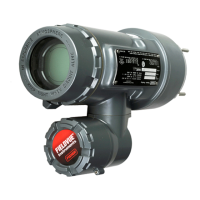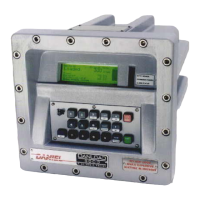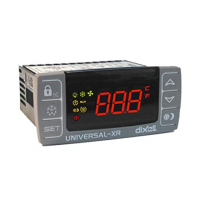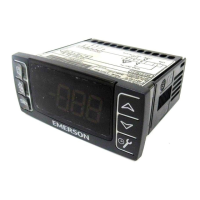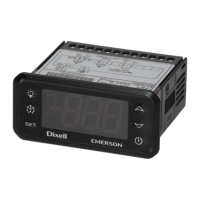DL8000 Preset Instruction Manual
Revised February-2016 Modbus Communications B-11
Conversion
Indicates the type of conversion, if required, for the
data. By default, the system returns these values as
floating point numbers. See Table A-6 for a listing of
convert codes.
4. Click Apply to save any changes you have made to this screen.
5. Proceed to Section A.4 to configure Modbus events and alarms.
B.4 Modbus Events & Alarms Functionality
The Event Log and Alarm Log have the same sized record format and
similar contents. The first word in a record is a bit map in which bit 9
indicates if the log record is an event (1) or an alarm (0). The meanings
of the other bits are specific to either the Event or the Alarm Log
records. See Table B-5.
The DL8000 supports Modbus with EFM extensions method for
retrieving alarms and events. When the DL8000 receives a Function
Code 03 request referencing defined Events/Alarms Register (usually
32), the DL8000 begins to collect records from first the Event Log and
then the Alarm Log, starting where the last poll left off. The DL8000
then collects records until either there are no more new events/alarms
or the maximum of twelve records have been collected. The DL8000
sends the information back to the host, which in return replies with
Function Code 05, referencing the same Events/Alarms Register and
indicating that the points have been received and that the host is ready
for the next twelve records.
B.4.1 Reading Events & Alarms Register
The Modbus request to read the Event & Alarm Log uses the standard
read Function Code 03. In this request, the number of registers is
included to maintain format compatibility but is ignored by the
receiving DL8000.
For the date stamp in the events and alarms returned, the year (YY) is
really the number of years since 1980 (for example, if the current year is
2007, the year (YY) for the date stamp would be 27).
B.4.2 Acknowledging Events & Alarms
The Modbus request to acknowledge the Event\Alarm Log uses
Function Code 05. For this request, the DL8000 always uses only one
register.

